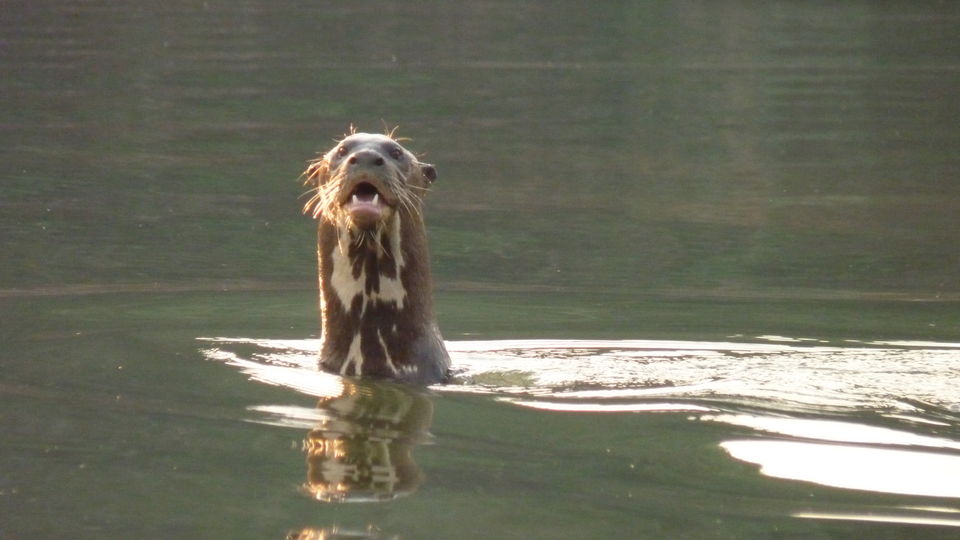Science News
Giant Otters, Huge Vocalizers

Giant otters are very social creatures. They live in family groups of three to nine animals, with monogamous parents and siblings of various ages. Scientists are finding that, even though other otter species may live in larger groups, giant otters are the most social of the family. Adults communicate using 22 distinct vocalizations, while pups use a different set of 11 sounds to call to each other.
Giant otters make their homes in the rivers, lakes, and wetlands of South America. True to their names, these otters can grow to the size of a large child or small adult. They are important monitors of ecosystems, keeping fish populations in balance, and they have no real predators… besides humans.
They were hunted to perilously low numbers—with populations plummeting into the double digits by the early 1970s. With protection as an endangered species, their numbers have rebounded to about 5,000 in the wild. But habitat destruction, and even ecotourism, hurts—giant otters get so stressed by humans they have trouble reproducing or raising their young when humans are present. As a result, giant otters do not survive well in captivity.
For all these reasons, when Christina Mumm and Mirjam Knörnschild decided to study the vocalizations of these social creatures, they knew they had to keep their distance. They observed the otters from 10-50 meters (33-164 feet) away in a solo kayak, staying even farther away if a young otter was present. Still, they recorded the otter behaviors and vocalizations well enough to count and categorize them. (Video of their observations is available here.)
Publishing today in PLoS ONE, the researchers essentially describe the vocabulary of giant otters. They counted their repertoire of distinct sounds, classified their acoustic structure, and described the behaviors that accompany each sound. They even provided the first description of vocalizations uttered in babbling bouts by newborn giant otters, which may be practice for the full adult vocal repertoire.
The team compares the high vocalization complexity in giant otters to those of other highly social animals, including primates, canids, and mongooses and meerkats. The scientists also correlate vocal complexity to social complexity, confirming suspicions that giant otters have the most complex social environment of all otter species.
And the research is not just about being social. The authors write, “We hope that this detailed account of the giant otters’ vocal repertoire will help to facilitate conservation efforts of this endangered species. By providing the behavioral context and acoustic measures of the vocalizations, the otters’ arousal or stress in a given situation may be easier to evaluate.”
Perhaps if we can learn to listen to members of this rare, endangered species, we can also learn how to preserve their future on Earth.
Image: www.Araguaia.org